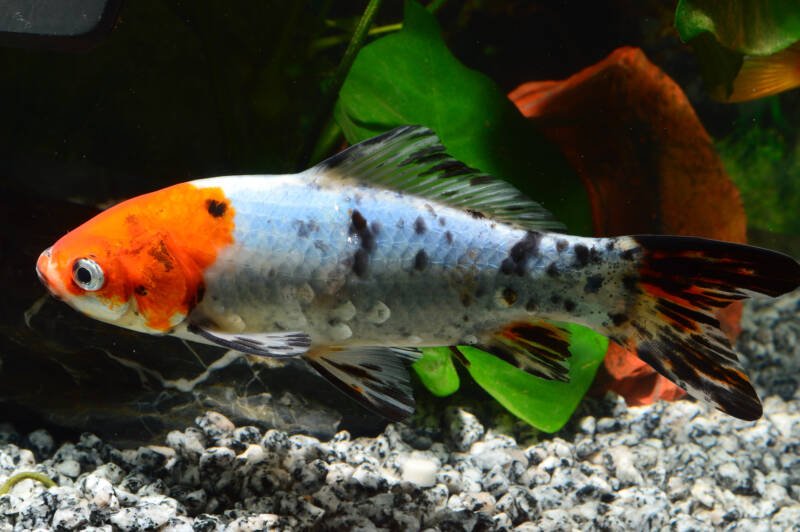It started out as just a few, now you have an aquarium full of snails!
How did these pest snails get in your tank in the first place? Likely, they came attached to new aquarium plants or hiding within gravel.
Regardless of the method of entry, you must now consider your snail control approach.
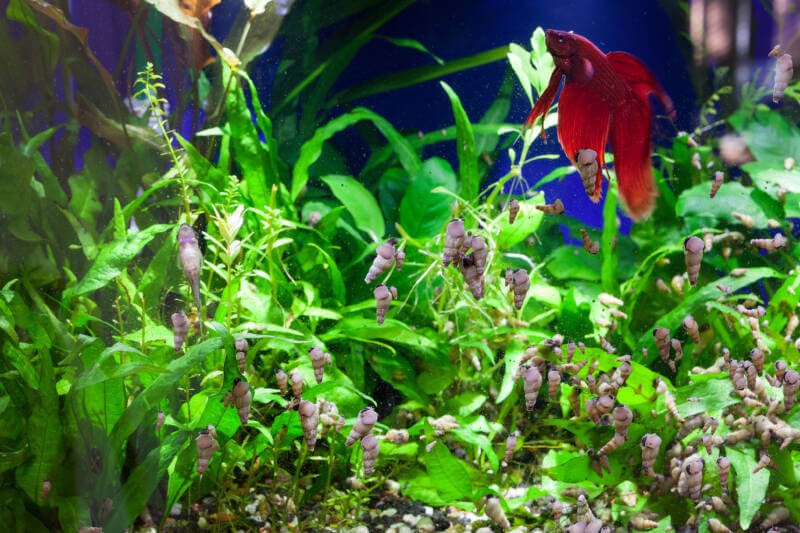
A multi-faceted, natural approach to snail control works best, including:
- Limiting algae growth through regular cleaning and water changes
- Not overfeeding – only feed your fish what they can easily consume, thereby reducing leftover fish food
- Manually removing snails (attaching a lettuce leaf to the side of the tank and letting the snails come to it is one great method)
- Finally, consider adding snail-eating fish.
For this last suggestion, some research is required. For example, some fish will eat snails but not snail eggs.

Other fish are aggressive and cannot be added to a community tank. Some species may pick at snails but may not devour enough to control the snail population.

Below, we introduce several snail-eating species to consider.
1. Dwarf Botia/Dwarf Chain Loach (Yasuhikotakia sidthimunki)
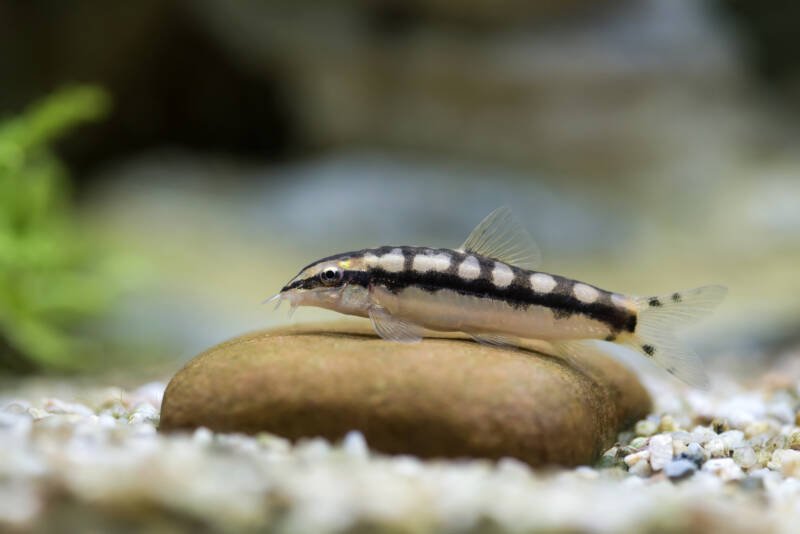
Minimum Tank Size: 20-30 gallons
The dwarf chain loach (also known as Ambastaia sidthimunki) is a smaller botia species, maxing out at 2.4 inches in length.
They are boisterous, playful, and best kept in a large group for natural social behavior.
They shoal in various levels of the tank, and their silver and black “chain link” coloration adds visual interest.
These fish snack on snails, which is great if you have snails you want to control, such as pond snails. It may harass ornamental snails, even larger ones.
Because they are omnivores that also require vegetable matter in their diet, snails should not be considered their only food source.
2. Clown Loach/Tiger Botia (Chromobotia macracanthus)
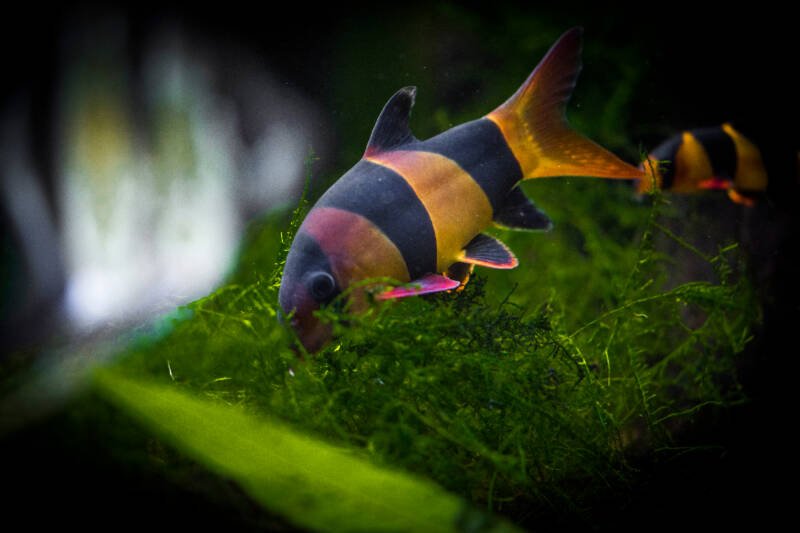
Minimum Tank Size: 100 gallons
Most clown loach specimens come from one of two wild groups in Kalimantan and Sumatra.
This large species reaches up to 12 inches in length and should be kept in a group of at least five, so you have a significant tank size requirement.
This omnivorous loach eats snails, but they are not the main part of its diet.
Clown loaches may not eat enough to handle an outbreak alone, but they can be part of a snail control crew and will dig in the substrate to search for snails.
Other unique behaviors include squeezing into tubes and resting on its side.
3. Dwarf Crayfish (Cambarellus patzcuarensis)

Minimum Tank Size: 10 gallons
The dwarf crayfish grows to just under an inch in length and looks like a mini lobster.
These crayfish are prized as tank cleaners and devour algae along the substrate and on tank decorations.
Dwarf crayfish are excellent for warm water, tropical tanks with plenty of vegetation, and hiding spaces to allow molting.
They are best paired with fish that stay in the mid-to-upper levels of the tank.
This crayfish will prey on small snails, including Malaysian trumpet snails, and even smaller fish and shrimp that swim too closely.
They can also damage delicate live plants, but hardy ones do just fine.
4. Cory Catfish (Corydoras)
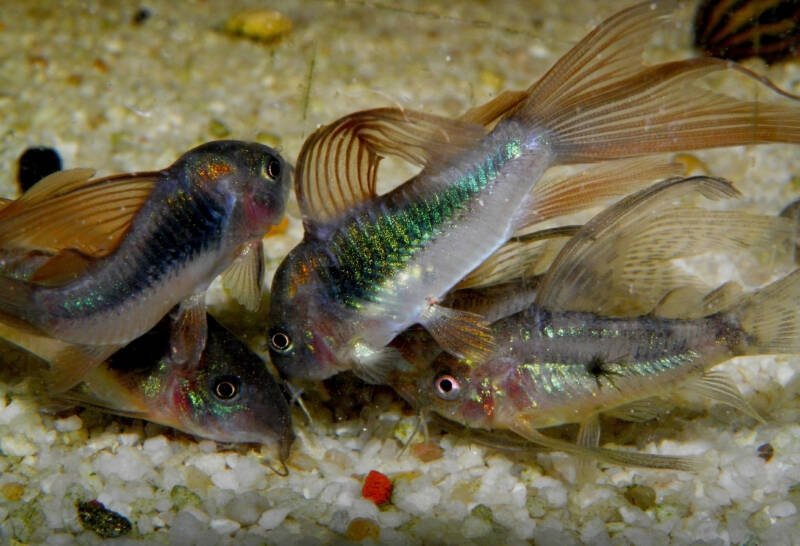
Minimum Tank Size: 20 gallons
Cory catfish are peaceful fish frequently recommended for community tanks.
There are several cory species that grow anywhere from one to four inches in length and continuously scavenge the bottom of the tank. They are social and should be kept in groups.
These slow-moving fish do not pursue prey. Corys get along with larger snails but occasionally eat the smaller ones.
If they are eating snails, it may be a sign that they are not receiving enough other food in their diet.
Corys will dig in the substrate and occasionally will eat snail eggs as they search for food.
5. Polka Dot Loach (Botia kubotai)
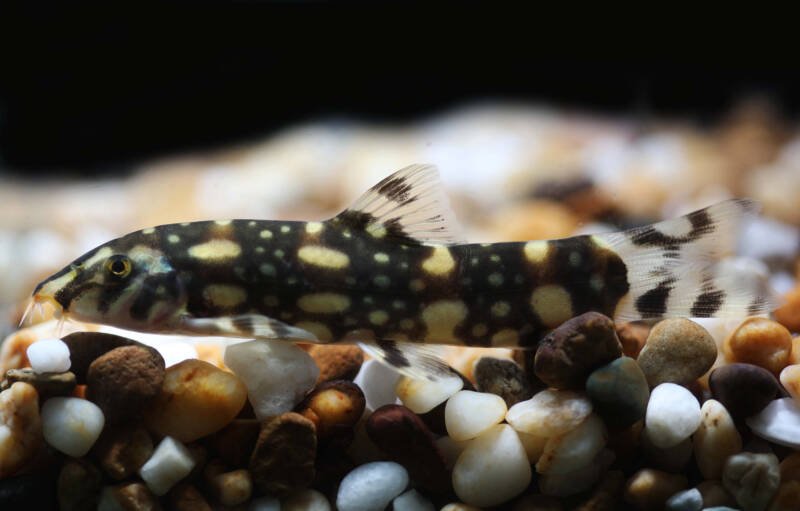
Minimum Tank Size: 30 gallons
The polka dot loach undergoes unique pattern and color changes throughout its life cycle. They are a social species that need a group of at least four.
Good community fish with members of their own species, they can nip at the long fins of slow-swimming fish.
They grow between four and five inches long and live eight to 12 years.
These fish are primarily bottom-feeding omnivores that will eat everything from larvae to algae wafers.
Meaty foods comprise the bulk of their diet, and this species will eat snails and fish smaller than an inch if given the chance.
6. Convict Cichlid (Amatitlania nigrofasciata)
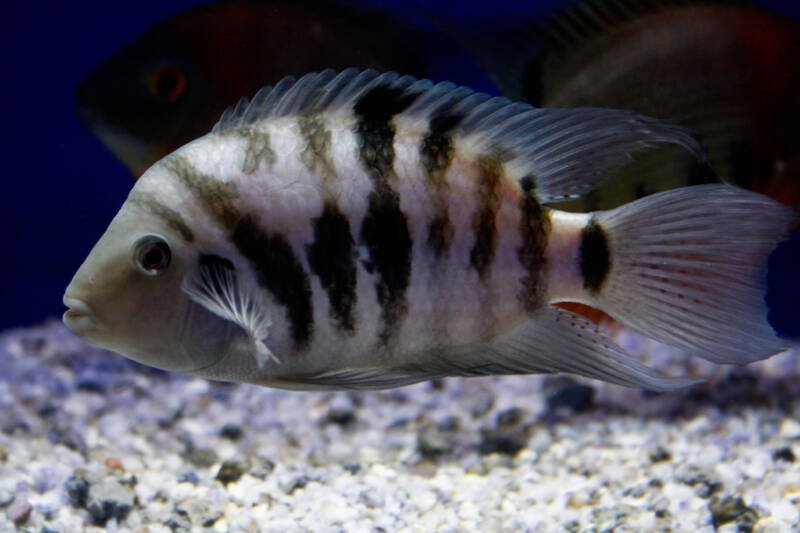
Minimum Tank Size: 30 gallons
The convict cichlid is a freshwater fish from Central America. With a lifespan of eight to 10 years, this fish is known for its prison stripe look.
Its adult size of four to five inches means it is suitable for smaller tanks.
This omnivorous fish hunts live prey as part of its diet and will go after both shrimp and snails without discriminating between pests and ornamental snails. If it fits in the mouth, they will eat it.
They are not model community fish and can be aggressive when establishing a territory, especially if the tank is too small. Convicts also dig in the substrate and can uproot plants.
7. Green Spotted Puffer (Tetraodon nigroviridis)
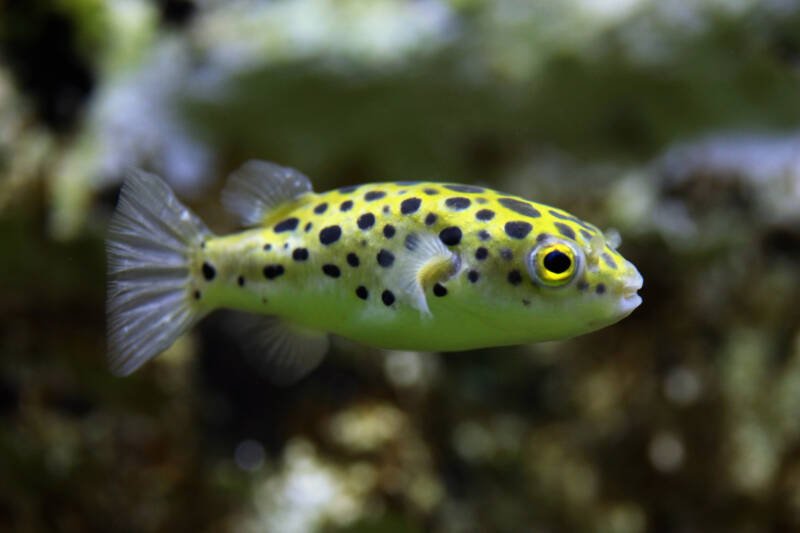
Minimum Tank Size: 55 gallons
The green spotted puffer is a popular fish from the rivers of southeast Asia.
Although they only grow to between five and six inches in length, they need a large tank with robust filtration and frequent water changes.
These fish need hard-shelled food sources in their diet to grind down their always-growing teeth.
They will hunt and eat shrimp and will consume pond snails that are the size of its eye or smaller.
The challenge with green spotted puffers is their aggression. These pufferfish do not get along with many tank mates and are best kept alone in a brackish water setup.
8. Assassin Snail (Clea helena)
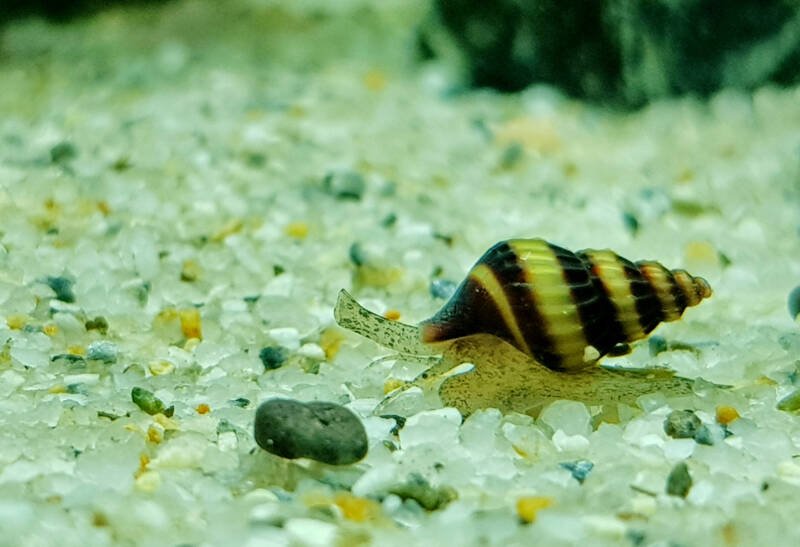
Minimum Tank Size: 10 gallons
Although not a fish, the assassin snail is adept at handling snail outbreaks.
They are so effective that they are frequently recommended in online forums to control common pest snails, including Malaysian trumpet, ramshorn, and pond snails.
These hunters may also prey on smaller shrimp, so take care when introducing them. Assassins do not consume snail eggs, so you may still see a future outbreak.
The hardy assassin grows to three inches in length and hides in the substrate or vegetation to wait for prey.
They do not breed as quickly or prolifically as do pest species, so they will not overrun your tank.
Koi and goldfish are large, cold-water fish that grow to more than a foot in length.
These beautiful fish come in many color varieties, are good in groups, and are best suited for larger aquariums or ponds.
Both species are opportunistic omnivores that will eat almost anything that fits in their mouths, including smaller fish, shrimp, and snails.
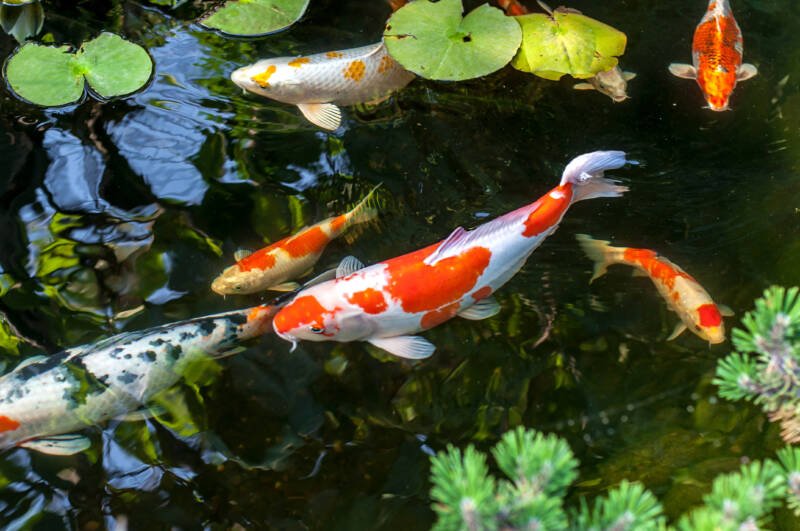
Larger ornamental snails may not get eaten but may be harassed and stressed.
Most goldfish will readily devour any snails in the tank. Koi will eat ramshorn and trapdoor snails.
However, these fish may not clear all snails from a large pond, and you may have to mitigate.
10. Striped Raphael Catfish (Platydoras armatulus)
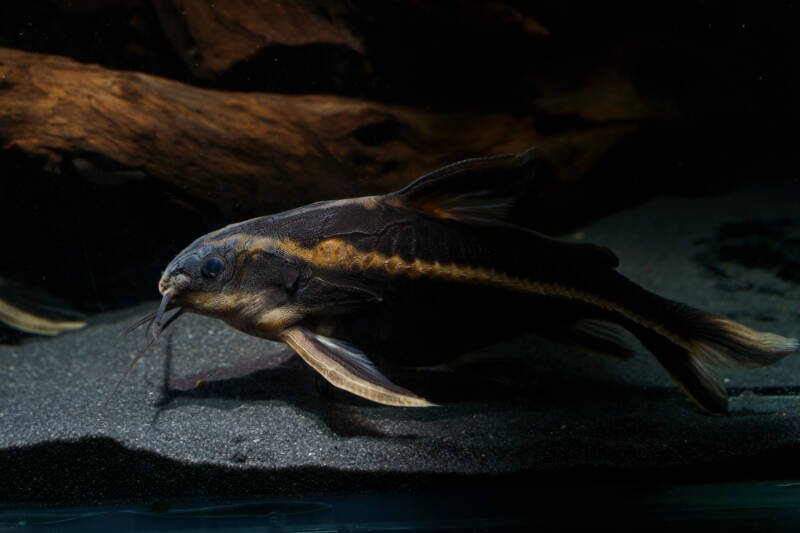
Minimum Tank Size: 50 gallons
The striped Raphael catfish is a long-lived, hardy species from South America.
It is easy to care for and does not require frequent water changes, as do other species.
This dark fish with white horizontal stripes lives from 10 to 15 years and gets up to six inches in length.
Its fin rays are sharp, and care should be taken when handling or moving this fish.
This bottom feeder has sensitive barbels to search for food.
They are not picky, and in addition to cleaning what they find on the tank bottom, this species preys on invertebrates, including shrimp and small pest snails.
11. Yoyo Loach (Botia almorhae)
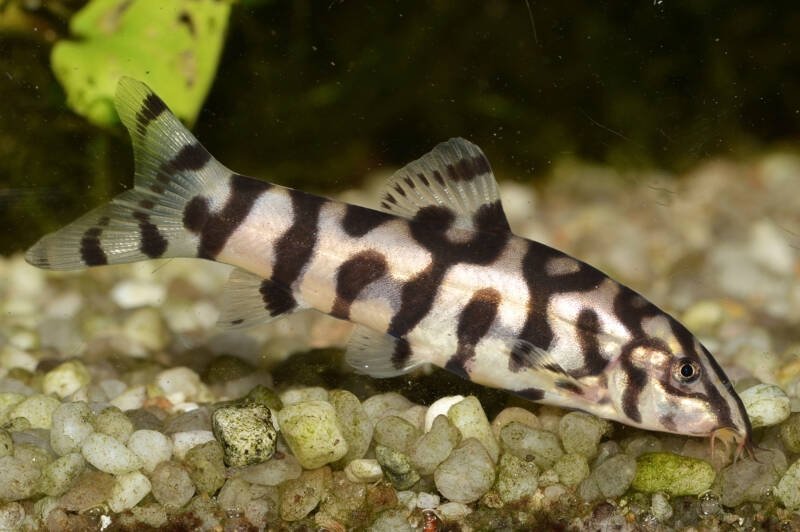
Minimum Tank Size: 20 gallons when young, 70 gallons when adult
The yoyo loach is a smaller species, reaching a length of three to five inches with a lifespan of up to eight years.
This interestingly patterned, fast swimming, bottom-dwelling fish has a lively personality, and unlike many loach species, is active during the day.
They are an easy addition to a community tank and get along with both peaceful and semi-aggressive fish, although they can squabble with their own kind.
Yoyo loaches sift through the sand to search for aquarium snails, including trumpet snails, which they eat right out of their shells.
They should be kept in a group of at least six for the best social behavior.
12. Betta Fish (Betta splendens)
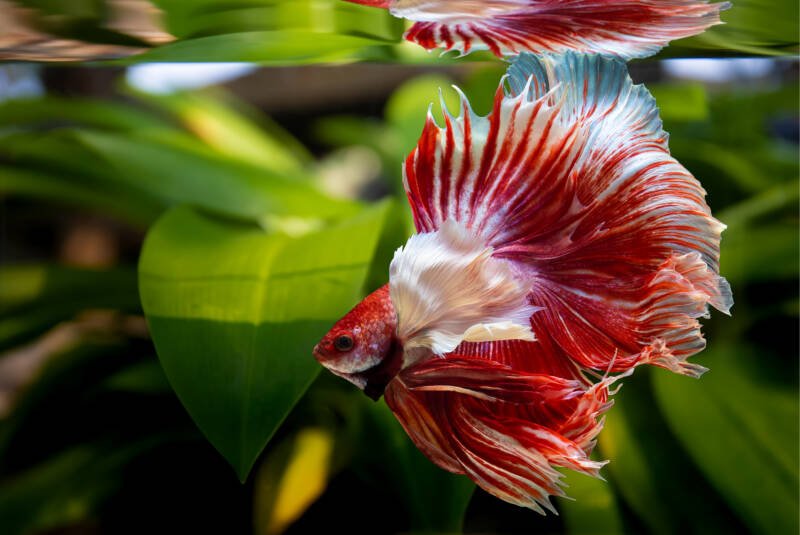
Minimum Tank Size: 10 gallons
Bettas are a tank favorite for their beautiful colors, flowing fins, and lively personalities.
They grow to three inches in length and are easy to care for but can be aggressive and are often kept as a single specimen.
They are carnivores that typically hunt insects and eat larvae.
These fish can suck a snail out of its shell and eat it; however, the snail needs to be small enough for the betta to consume.
Bettas also snack on snail eggs, which can help reduce the size of subsequent snail generations.
Add ornamental snails only if they are large enough that the betta will leave them alone.
13. Zebra Loach (Botia striata)
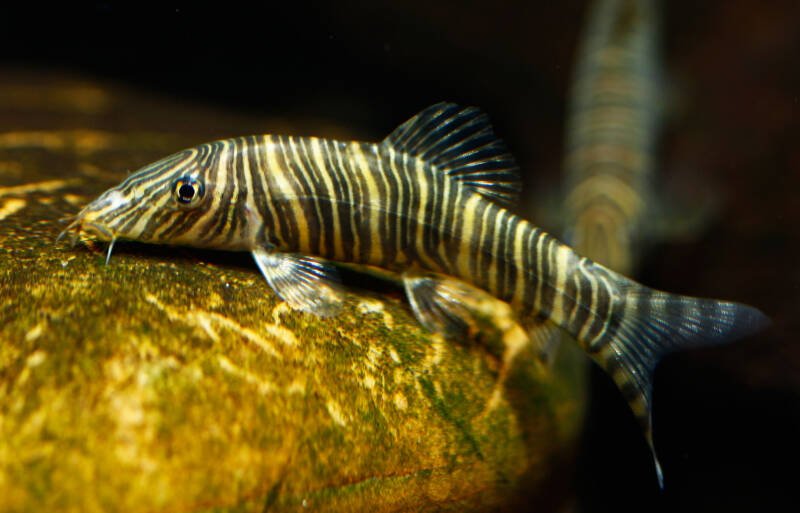
Minimum Tank Size: 30 gallons
The zebra loach is a social bottom-dwelling fish that grows to between three and four inches in length.
They are healthiest when kept in groups of at least five and split their time between actively searching the tank bottom for food and hiding out.
These omnivores scavenge and eat algae. They get along in a community tank and will eat smaller freshwater aquarium snails, such as pond snails or Malaysian trumpet snails.
Although it does not prey on larger ornamental snail species, such as mystery snails, it can attack smaller ones and invertebrates, so be cautious when introducing such species.
14. Bala Shark (Balantiocheilus melanopterus)
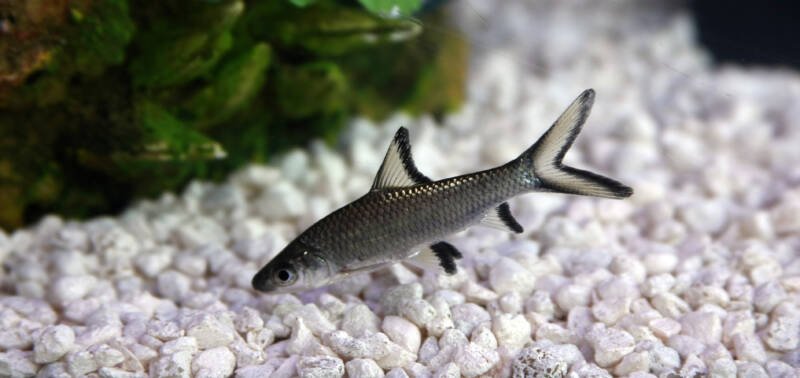
Minimum Tank Size: 120 gallons
The bala shark has a sleek appearance, with a silver body and sharp black and yellow fins. They grow slowly and ultimately reach a length of up to 15 inches.
This very active and social fish is best kept in groups, which necessitates a significant minimum tank size.
Its peaceful nature makes it a great addition to larger aquariums, provided any tank mates are large enough to not fit into the bala shark’s mouth.
As a juvenile, it will eat shrimp and snails, but as this fish grows, it will prey on smaller fish.
They have big appetites and eat several times a day.
15. Dwarf Puffer Fish (Carinotetraodon travancoricus)
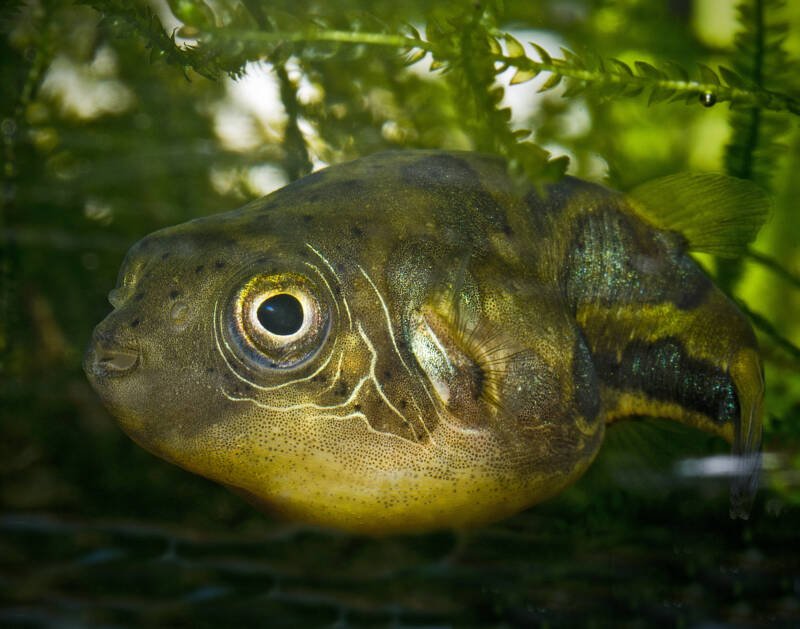
Minimum Tank Size: 10 gallons
The dwarf puffer fish, also known as the pea puffer, hails from the Pamba River in southern India and is one of few truly freshwater puffers.
Reaching an adult length of around one inch, these diminutive fish need a well-planted tank with attention to water quality and low water flow.
They are intelligent, inquisitive, and can be kept singly or in groups.
They can be somewhat aggressive and territorial, thereby limiting potential tank mates.
Puffers need hard-shelled food as part of their diet, and the dwarf puffer is no exception. In an aquarium, they will eat trumpet and bladder snails.
16. Rainbow Darter Fish (Etheostoma caeruleum)
Minimum Tank Size: 20 gallons
The rainbow darter fish is native to the cool-water rivers and lakes of North America.
They have a gorgeous color presentation, with an orange-red body, thick blue-green stripes, and a rainbow-colored dorsal fin.
When rainbow darters feel threatened or are injured, they release a pheromone that signals other darters of the danger.
This small species gets up to two to three inches in length and can be housed with other peaceful fish.
In the wild, these daytime predators are primarily insectivores but also eat crustaceans, larvae, snails, and fish eggs.
In an aquarium, they will actively hunt snails along the tank bottom.
17. Pumpkinseed Sunfish (Lepomis gibbosus)
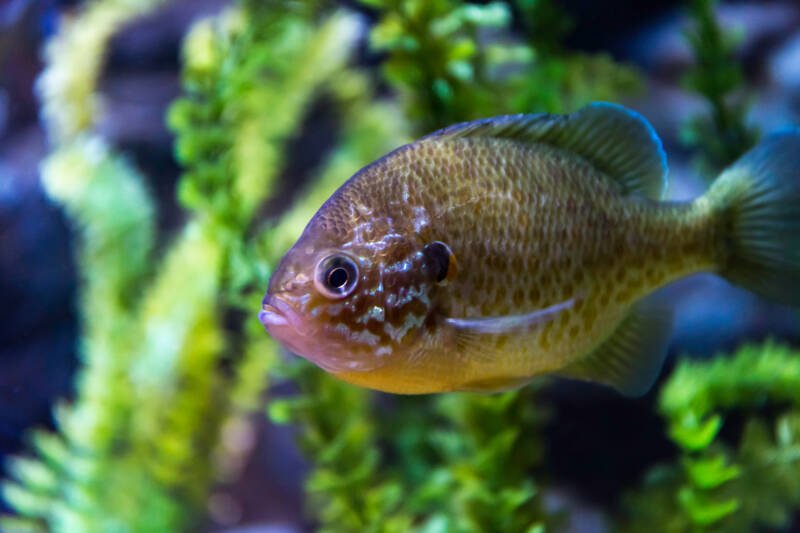
Minimum Tank Size: 55 gallons
The colorful pumpkinseed sunfish is native to the eastern United States and Canada.
They prefer shallow, warm waters and eat larvae, mollusks, crustaceans, and snails. They have specialized jaws that crush the shells of prey.
These fish grow from three to eight inches in size and live up to 12 years.
They are territorial, need a large tank for their size, and are best kept in a group of their own species.
While this fish can reduce snail populations, it may not rid the tank entirely.
Take care when introducing tankmates, as they can prey on smaller fish, even smaller pumpkinseed fish!
18. Dwarf Gourami (Trichogaster ialius)
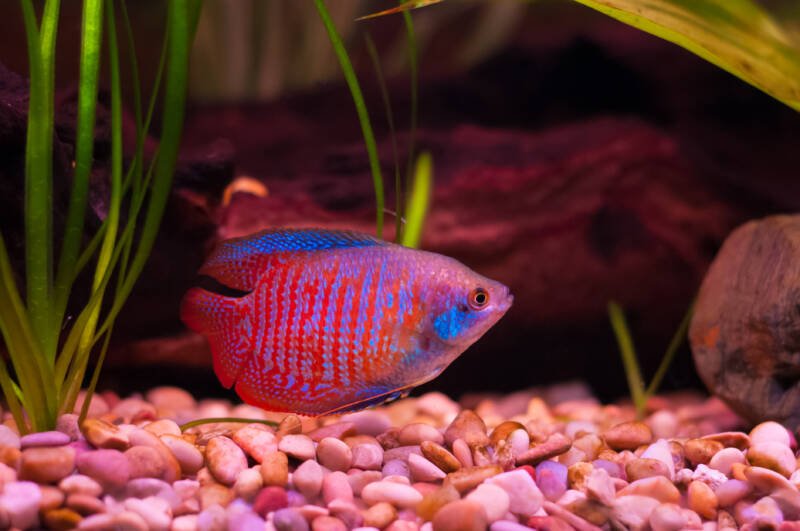
Minimum Tank Size: 10 gallons
A smaller gourami species, the dwarf gourami is a peaceful, brightly colored fish that grows between two to three inches long.
They come in several color varieties and are “labyrinth fish” that have a specialized organ for breathing air at the water’s surface.
These omnivores hunt insects at or around the surface of the water.
Dwarf gouramis will occasionally eat small pond snails; however, this is not their primary food source.
They can live for up to four years and need a quiet location for their tank as they can be easily startled.
Dwarf gouramis are compatible with many other species, although males can be territorial when breeding.
19. Paradise Fish (Macropodus opercularis)
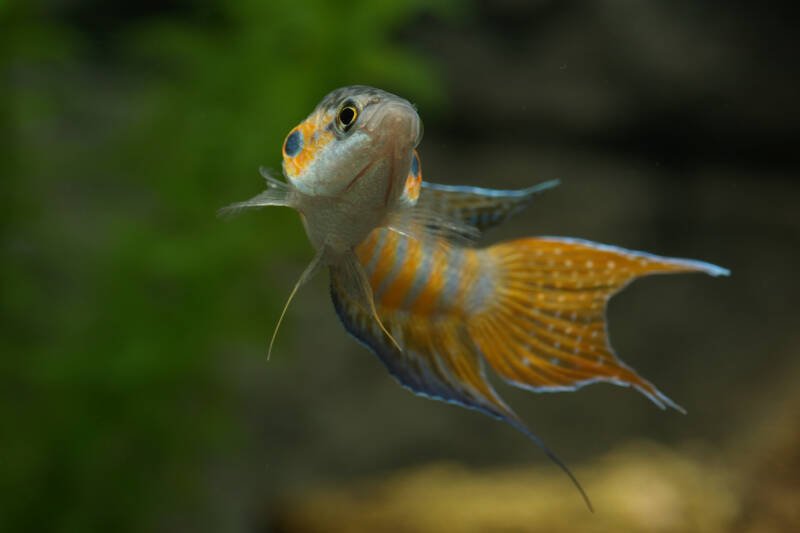
Minimum Tank Size: 20 gallons
The paradise fish is a semi-aggressive omnivore from southeast Asia. It grows to around four inches in length and lives for six to eight years.
A vividly colored labyrinth fish, it can intake air at the water’s surface.
Paradise fish will try to establish dominance in a community tank and mature paradise males may fight if the tank is not large enough.
They can also nip at long-finned or slow-moving fish.
These fish do not go after shrimp and snails often. They will eat small ramshorn and mystery snails but should leave them alone if they are bigger.
20. Spixi Snail (Asolene spixi)
Minimum Tank Size: 5 gallons
The small spixi snail reaches a size of just over one inch. It is a peaceful, freshwater omnivore with a lifespan of up to three years.
Nocturnal hunters, they prey on eggs and smaller snails, even those of their own species.
They eat Malaysian trumpet, pond, and bladder snails but may not decimate a population as well as assassin snails.
This species will not attack shrimp and can be housed with several different species.
Spixi can damage delicate live plants and is susceptible to attacks by crayfish, so avoid stocking them together.
Originally from South America, these invasive snails have found their way into new environments. Check local regulations before importing.
What are your favorite species for controlling snail outbreaks in your tank?
